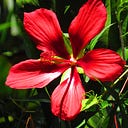The Texas State Tree:
The Pecan
Have you ever wondered about the majestic tree that bears those delicious nuts fondly used in pies and other Texan delicacies? The Pecan tree, the Texas State Tree, is not just a symbol of Lone Star State pride but a fascinating botanical specimen with an interesting story to tell. Join us as we delve into an in-depth botanical profile of this remarkable tree, explore its significant role in Texas history and culture, and review its enormous economic impact on the region. Keep reading to delve further into all things Pecan!
Pecan Tree: A Botanical Profile
The Pecan tree, known scientifically as Carya illinoinensis, holds a special place of honor in the Lone Star State. As the official Texas state tree, it underscores the bond between Texan culture and nature. With striking height reaching up to 180 feet and an expansive canopy that provides ample shade, this native North American species is more than just visually impressive — it’s an integral part of Texas’ landscape.
A deeper dive into this botanical marvel reveals why Texans take such pride in their beloved Pecan trees. The tree blooms during spring with clusters of yellowish-green flowers followed by its much-celebrated produce, pecans that ripen around autumn. These oval-shaped nuts enclosed in husks are not only a delicious treat but also serve as a primary source of income for many local farmers, thereby making significant contributions to Texas’ economy.
Also, the deciduous pecan represents endurance and longevity, with some trees even surviving for centuries! Its wood is used broadly for furniture or flooring, while its leaves add richness to compost piles owing to their high nitrogen content.
From botanical magnificence marking seasonal changes through its vibrant foliage transitions, from economic impact supporting local communities via agriculture, right through historic symbolism entrenched within Texan identity — charting the multi-faceted profile of the Pecan Tree leads one down a path lined with rich cultural heritage woven lovingly into every Texas heartstring.
The Important Role of Texas History and Culture
Discovering the Texas state tree illuminates our journey into the heart of Texan history and culture. The Pecan tree has been central to Texan life even before European settlers arrived on American soil. Indigenous tribes revered it for its nutritious nuts, which provided vital sustenance during harsh winters. As Europeans made their way westward, they, too, discovered the bounty of these majestic trees that dotted the fertile landscapes across what is now known as Texas.
Botanical enthusiasts find much intrigue in examining this iconic species closely. From high above, Pecan trees protect with their lofty canopy while below offering one of America’s favorite native nuts wrapped in hardy shells that are as intriguingly complex as they are challenging to open.
Economically speaking, the Pecan tree plays an important yet understated role in shaping modern-day Texas’ economy. Annually contributing millions to local economies through commercial pecan production alone — not accounting for revenue generated from tourism or associated products like pecan pies and other nut-based treats — it remains an enduring representation of its cultural significance within “The Lone Star State”. Thus continues a long-standing tradition where each fall Texans gather beneath branches laden with ripe fruit ready for harvest — a testament to both man’s resilience against nature’s wrath and his profound connection with it.
Pecans are more than just a delicacy that graces tables during Thanksgiving. This hardy nut has positioned itself as an indispensable contributor to Texas’s agricultural sector. In fact, pecans contribute significantly towards making Texas one of the topmost producers in America’s $517 million pecan industry.
The pecan crop is also recognized as a potent employment generator within rural communities where job opportunities can sometimes be scarce. From farming and harvesting to processing facilities for manufacturing various pecan-based products like pies and ice-creams, there exists an extensive network that fuels local economies while preserving tradition.
This botanical marvel highlights how nature can intertwine with commerce in harmony — providing sustenance both to wildlife that indulges in their bounty every fall season and humans who harvest them economically. The Pecan tree thus remains rooted not only within the fertile Texan soil but deeply entrenched within the heart of its folkways, too.

